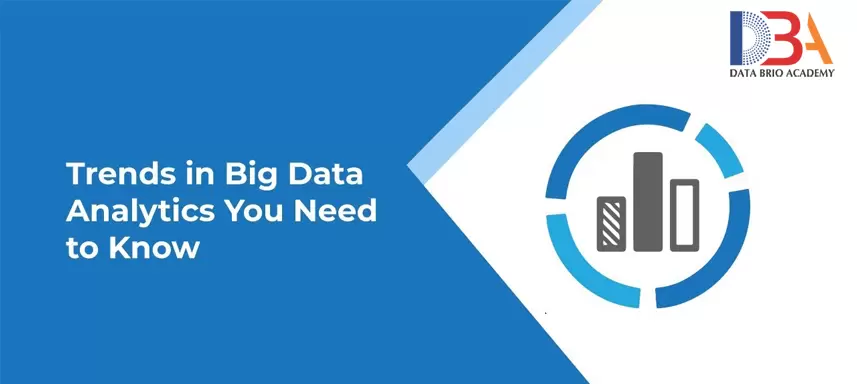In recent years, big data analytics turned out to be one of the most dominant trends in the field of information technology. Big data analytics, which involves data collection, data analysis, as well as data implementation has been changed its approach over the years from department-oriented to business-driven along with embracing the cutting-edge technologies.
Although, big data has been mainly deployed by large-scale businesses that were capable of investing large amounts of resources to gather and analyze data earlier, however, today, all kinds of businesses – be it large-scale or be it small-scale make use of it to obtain intelligent business insights. As a consequence, big data services has been gradually evolved at an incredible pace faster than ever and the deployment of big data analytics in the cloud boosted a number of businesses to leverage the benefits of the latest trends across the technology industry.
The creation of an enormous amount of data and its proper interpretation became extremely challenging for businesses these days. To tackle these issues associated with big data in the most effective manner, the businesses need to adopt the appropriate data-driven big data analytics to stay ahead of the competition in the corporate world. Here is a look at the biggest data analytics trends for the near future.
Most of the latest big-analytics have been utilized by public-cloud providers
Nowadays, businesses are moving towards public clouds for big data analytics and effectively developing various greenfield applications to suit these kinds of environments. Recently, three of the prominent public-cloud service vendors, namely, Amazon Web Services Inc., Google Cloud Platform, and Microsoft Azure rolled out efficient solutions for their business clients to migrate their respective data lakes from on-premise to cloud platform. On the other hand, few more public-cloud service providers are abandoning the efforts associated with platform-as-a-service and infrastructure-as-a-service segments to Microsoft Corp., AWS, and Google LLC – the move will certainly increase the demand for high-grade software-as-a-service applications for industry-specific and line-of-business requirements.
The ecosystem of big data analytics is strengthening itself through cloud-native applications
Well known for automating application deployment and management, the open-source software – Kubernetes is regarded as the foundation for the next-Gen of cloud-native big data as most of the recrystallization of the data ecosystem centralized around it. During last year, a new wave of innovations brought numerous activities into the spotlight associated with funding as well as mergers-and-acquisitions. Also, these innovations mostly emphasized on significant challenges such as data loading methods concerned with the cloud-warehouses, distributing of in-memory data across several clouds, and requirement of scalable cloud file storage for global enterprises.
Many of the big data analytics platform providers are putting their money into data science toolchains
In the past few years as big data analytics gained extreme popularity among the newer generation of software developers who are working on projects related to AI and machine learning. The well-established big data analytics platform providers launched advanced data science solutions in the market, including Dataiku, Anaconda, DataKitchen, Domino Data Lab, and DataRobot. In the near future, most of the service providers will focus on enhancing the capabilities of their products to automate traditionally manual tasks to data labeling, feature engineering, and hyperparameter optimization as well as try to invest more in advanced tools to optimize the AI-based model’s deployment within production applications.
Spark and Hadoop technologies are now termed as legacy systems
In the past few years, Hadoop has eventually lost its relevance in the arena of big data analytics. Currently, Hadoop is hardly struggling to expand its reach into online analytical processing, data warehousing, business intelligence, and some other emerging niches. At the end of this year, Hadoop will be eradicated from the environments of big data in favor of stream-computing platforms, distributed object stores, and extensively scalable in-memory clusterings.
Surprisingly, Apache Spark which once considered as the alternative for Hadoop is also struggling to keep up with the fast pace of dynamic technological environment in several TensorFlow-supported AI centers. This remarkable downward trend of Apache Spark could be seen in the domain of ETL applications as architecture allied with schema-on-read assumed more importance nowadays.
Big data catalogs are taking a central role in data management DevOps
In the near future, we can expect more repurpose of data lakes into big data catalogs by several businesses to improve their knowledge worker’s productivity, support next-Gen developers associated with projects of AI, and enable algorithmic transparency as well as e-discovery. In addition, cloud service vendors, namely, IBM, Informatica, Cloudera/Hortonworks, and Collibra strengthening their existing capabilities to manage metadata, images, models, containers, and other components effectively. Moreover, in the forthcoming days, the prominent public cloud vendors – AWS, Microsoft, and Google will launch their very own big data catalogs for their respective clients who empowered to decide on the deployment of those applications, either on hybrid public or private cloud platforms.
AI is transforming the business intelligence into actionable intelligence
In the last few years, the most-observed trends of BI have been the confluence of the technology’s conventional focus on historical analytics and latest AI-backed predictive analytics. These cutting-edge search, as well as forecasting related tools, enable businesses to execute any kind of task which usually performed by properly-trained data scientists. By the end of this year, numerous vendors of BI are attempting to integrate AI to extract predictive insights out of massive complex-natured data.
Conclusion
These days, to leverage the advantage of cutting-edge big data analytics technologies, businesses need to understand that they cannot merely depend on the traditional data warehouse. As technology evolves over time, numerous highly advanced applications would materialize along with new data types and data sources, at that time it becomes essential for the businesses to be prepared for the unforeseen future by keeping an eye on the above-mentioned big data analytics trends.
Article Source: https://tweakyourbiz.com/business/technology-trends/big-data-analytics

